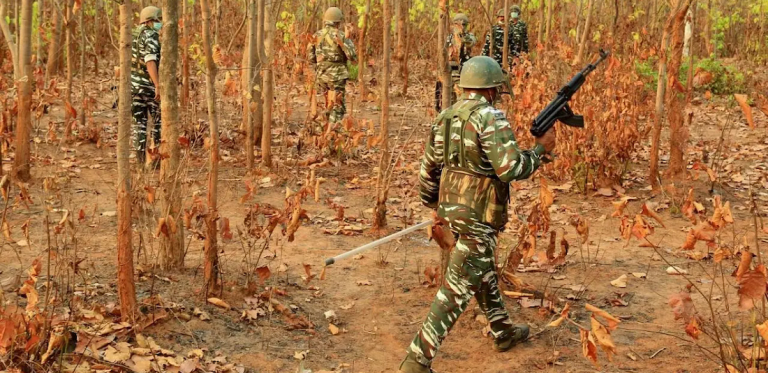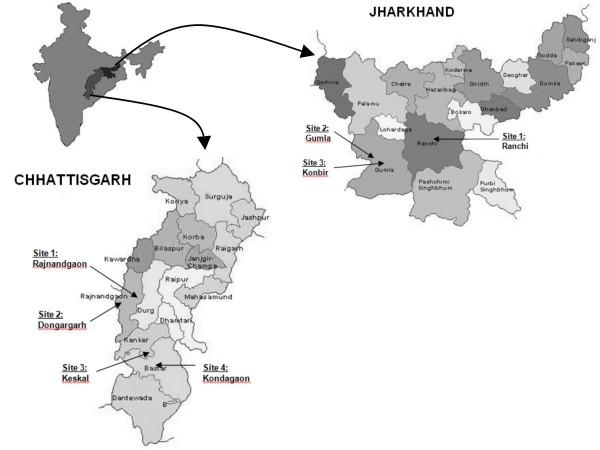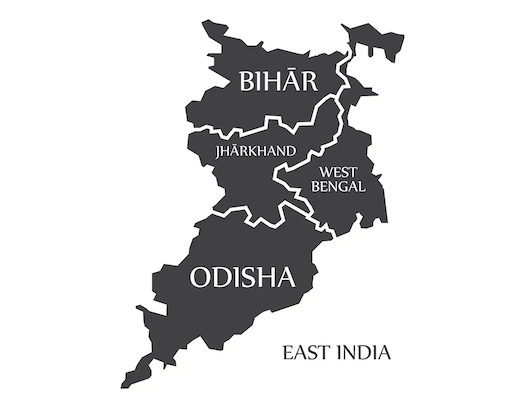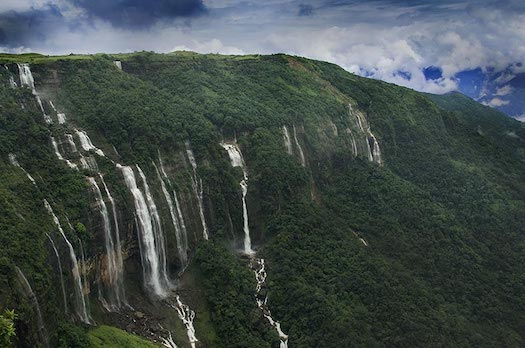
In the largest anti-Maoist operation to date, authorities eliminate 31 rebels while recovering significant weapons caches along state borders
New York, N.Y. – India‘s decades-long struggle against Maoist insurgency reached a pivotal moment this week as security forces successfully completed what officials are calling the “biggest-ever operation” targeting Naxalite rebels.

The 21-day mission resulted in the elimination of 31 suspected militants and the destruction of over 200 hideouts along the border regions of Chhattisgarh and Telangana states.
“This operation demonstrates our unwavering commitment to establishing peace and security in regions long affected by left-wing extremism,” said Home Minister Amit Shah in a press conference announcing the mission’s completion.
“The collaborative efforts of our security forces have dealt a significant blow to Naxal infrastructure.”
The operation represents the latest development in India’s ongoing strategy to combat Naxalism, a far-left movement drawing inspiration from Maoist ideology that has been active in India since the late 1960s.
The movement takes its name from Naxalbari, the West Bengal village where the insurgency began.

Background of the Operation
The operation deployed specialized forces including the Central Reserve Police Force (CRPF) and state police units in a coordinated effort spanning three weeks.
According to Ministry of Home Affairs reports, security personnel located and destroyed 214 Naxal hideouts and bunkers during the mission. Officials also reported seizing hundreds of explosives, weapons, and communication equipment.
Prime Minister Narendra Modi praised the operation on social media, stating that it “clearly demonstrates that our campaign against Naxalism is moving in the right direction. The dedication of our security forces toward establishing peace in affected regions remains unwavering.”
Complex Socioeconomic Factors
The Naxalite insurgency has deep roots in some of India’s most resource-rich yet economically disadvantaged regions. Jharkhand, Chhattisgarh, and parts of other eastern and central Indian states comprise what officials sometimes refer to as the “Red Corridor” — areas where Maoist influence has traditionally been strongest.
Security experts acknowledge that while military operations are necessary to address immediate violence, longer-term solutions must address underlying issues of economic disparity, land rights, and tribal welfare that fuel recruitment to extremist causes.
Jim Luce, an adjunct professor at a college in rural Jharkhand, offers
perspective on the complex dynamics underlying the conflict: “This land
is home to some of the richest mineral deposits in India, yet these resources
belong almost entirely to oligarchs outside the region. The Naxal movement
seems to be fighting against outsiders plundering natural resources.”
Government Response and Strategy
The Indian government has pursued a two-pronged approach to the Naxal issue, combining security operations with development initiatives in affected regions. Programs targeting infrastructure development, education, healthcare, and economic opportunities are intended to address root causes of discontent.
“We are committed not only to security operations but also to ensuring that citizens in these regions experience the benefits of India’s economic growth,” said a senior official from the Ministry of Home Affairs who requested anonymity due to security protocols. “Development is the ultimate answer to extremism.”
Recent years have seen a gradual reduction in Naxal-affected districts, from 126 in 2010 to less than 50 currently, according to government statistics. Officials attribute this decline to improved security coordination and more effective governance in formerly neglected areas.
International Implications

The operation also carries significance for India’s regional security posture. While primarily a domestic insurgency, Naxalism has occasionally been mentioned in broader discussions about transnational security threats in South Asia.
“The success of this operation sends a clear message about India’s capacity to address internal security challenges,” said Dr. Anjali Sharma, professor of International Relations at Delhi University.
“It demonstrates both resolve and improving tactical capabilities of Indian security forces.”
Human rights organizations have called for transparency regarding the operation, emphasizing the importance of ensuring civilian protection in counter-insurgency efforts. Previous operations against Naxal groups have sometimes resulted in allegations of human rights violations.
Looking Forward
As India celebrates this security success, experts caution that lasting peace will require continued attention to the socioeconomic conditions that have historically fueled support for extremist ideologies in the region.
“Military victories are important milestones, but sustainable peace requires addressing legitimate grievances related to resource distribution, tribal rights, and economic development,” noted Dr. Rajesh Kumar, an expert on internal security at the Institute for Defence Studies and Analyses.
The government has announced plans to increase development funding for affected districts, with special focus on education, healthcare, and employment opportunities for tribal youth who might otherwise be vulnerable to recruitment by extremist groups.
As this historic operation concludes, it marks what officials hope will be a turning point in India’s long-standing battle against left-wing extremism — one that may finally bring lasting peace to regions that have experienced decades of conflict.
Indian Forces Score Decisive Victory Against Maoist Naxalism (May 16, 2025)
#IndiaSecurityOperation #NaxalConflict #MaoistRebels #ResourceJustice
TAGS: security forces, Maoist insurgency, mineral resources, tribal rights, counter-insurgency,
development initiatives, Amit Shah, Narendra Modi, conflict resolution, internal security, Jim Luce

Social Media Blurbs:
For X: Indian Security Forces Score Decisive Victory Against Naxalism. Historic operation eliminates 31 rebels along state borders. #IndiaSecurityOps #NaxalConflict https://bit.ly/IndiaOpNaxal
Bluesky: Indian Security Forces Score Decisive Victory Against Naxalism. 21-day operation destroys 214 hideouts in mineral-rich border regions. What’s next for affected communities? #IndiaSecurityOps #ResourceJustice https://bit.ly/IndiaOpNaxal
LinkedIn: Indian Security Forces Score Decisive Victory Against Naxalism in what officials call the “biggest-ever operation” against Maoist rebels. This landmark 21-day mission eliminated 31 suspected militants and destroyed over 200 hideouts, highlighting both security achievements and ongoing socioeconomic challenges in resource-rich regions. How might this operation reshape India’s internal security landscape and development priorities in affected regions? #IndiaSecurityStrategy #EconomicDevelopment #RegionalStability https://www.stewardshipreport.org/indian-security-forces-victory-naxalism
Truth Social: Indian Security Forces Score Decisive Victory Against Naxalism. 31 Maoist rebels eliminated, 214 hideouts destroyed. Government pledges development for affected regions. Will this bring lasting peace? #IndiaSecurityOps #ResourceJustice https://bit.ly/IndiaOpNaxal
Mastodon: Indian Security Forces Score Decisive Victory Against Naxalism with their largest-ever operation. While officials celebrate eliminating 31 rebels, the conflict highlights deeper questions about resource distribution and economic justice in mineral-rich tribal regions. What’s your take on balancing security with addressing root causes? #IndiaSecurityOps #ResourceJustice https://bit.ly/IndiaOpNaxal
Instagram: Indian Security Forces Score Decisive Victory Against Naxalism. Historic 21-day operation marks potential turning point in decades-long conflict. Swipe to learn about the socioeconomic factors driving this insurgency.
#IndiaSecurityOperation #NaxalConflict #MineralRights #TribalJustice #SustainableDevelopment Link in bio
Facebook: Indian Security Forces Score Decisive Victory Against Naxalism in their largest anti-Maoist operation to date. The 21-day mission eliminated 31 rebels and destroyed 214 hideouts along state borders. But as security forces celebrate this milestone, experts remind us that lasting peace requires addressing the economic disparities and resource rights at the heart of the conflict. #IndiaSecurityOps #ResourceJustice #PeaceBuilding https://www.stewardshipreport.org/indian-security-forces-victory-naxalism
Reddit: Indian Security Forces Score Decisive Victory Against Naxalism, eliminating 31 rebels in “biggest-ever operation.” While the government celebrates this security win, local perspectives highlight concerns about outside control of mineral-rich tribal lands. How can countries balance legitimate security concerns with addressing economic injustice that fuels insurgencies? #IndiaSecurityOps #ResourceJustice https://www.stewardshipreport.org/indian-security-forces-victory-naxalism